
The Stanley Motor Carriage Company was an American manufacturer of steam cars that operated from 1902 to 1924, going defunct after it failed to adapt to competition from rapidly improving Internal combustion engine vehicles. The cars made by the company were colloquially called Stanley Steamers although several different models were produced.

Pearl Street Station was Thomas Edison's first commercial power plant in the United States. It was located at 255–257 Pearl Street in the Financial District of Manhattan in New York City, just south of Fulton Street on a site measuring 50 by 100 feet. The station was built by the Edison Illuminating Company, under the direction of Francis Upton, hired by Thomas Edison.

The Toronto Ferry Company was formed from the merger of the Doty Ferry Company with A.J. Tymon's Island Ferry Company, two of Toronto's early ferry operators to Toronto Islands in 1890. TFC was founded and headed by businessman Lol Solman, who owned several attractions on the Toronto Islands including Hanlan's Point Amusement Park, Hanlan's Point Stadium and the Hanlan's Hotel. The company's ferry license and ships as well as the amusement park and other assets were acquired by the Toronto Transportation Commission in 1927. On March 17, 2021, The Toronto Ferry Company Inc was registered under the Ontario Business Corporations Act to Michael A. McLaughlin.

A line shaft is a power-driven rotating shaft for power transmission that was used extensively from the Industrial Revolution until the early 20th century. Prior to the widespread use of electric motors small enough to be connected directly to each piece of machinery, line shafting was used to distribute power from a large central power source to machinery throughout a workshop or an industrial complex. The central power source could be a water wheel, turbine, windmill, animal power or a steam engine. Power was distributed from the shaft to the machinery by a system of belts, pulleys and gears known as millwork.

A Corliss steam engine is a steam engine, fitted with rotary valves and with variable valve timing patented in 1849, invented by and named after the US engineer George Henry Corliss of Providence, Rhode Island. Corliss assumed the original invention from Frederick Ellsworth Sickels, who held the patent (1829) in the US patent office.
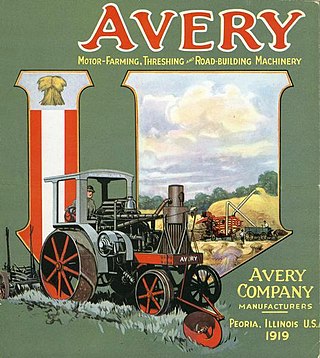
The Avery Company, founded by Robert Hanneman Avery, was an American farm tractor manufacturer famed for its undermounted engine which resembled a railroad engine more than a conventional farm steam engine. Avery founded the farm implement business after the Civil War. His company built a large line of products, including steam engines, beginning in 1891. The company started with a return flue design and later adapted the undermount style, including a bulldog design on the smokebox door. Their design was well received by farmers in central Illinois. They expanded their market nationwide and overseas until the 1920s, when they failed to innovate and the company faltered. They manufactured trucks for a period of time, and then automobiles. until they finally succumbed to an agricultural crisis and the Depression.
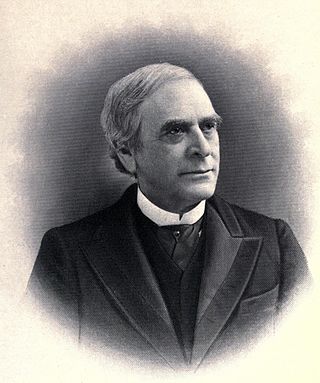
George Henry Corliss was an American mechanical engineer and inventor, who developed the Corliss steam engine, which was a great improvement over any other stationary steam engine of its time. The Corliss engine is widely considered one of the more notable engineering achievements of the 19th century. It provided a reliable, efficient source of industrial power, enabling the expansion of new factories to areas which did not readily possess reliable or abundant water power. Corliss gained international acclaim for his achievements during the late 19th century and is perhaps best known for the Centennial Engine, which was the centerpiece of the 1876 Centennial Exposition in Philadelphia.

Henry Howard was an American lawyer and politician. He served as the 32nd Governor of Rhode Island from 1873 to 1875.

The history of steam road vehicles comprises the development of vehicles powered by a steam engine for use on land and independent of rails, whether for conventional road use, such as the steam car and steam waggon, or for agricultural or heavy haulage work, such as the traction engine.

The Dry Dock Complex consists of six interconnected buildings located at 1801–1803 Atwater Street in Detroit, Michigan, as well as the remains of a nearby dry dock at 1900 Atwater Street. The 1801-1803 Atwater complex is also known as the Globe Trading Company Building, and in 2015 was opened by the Michigan Department of Natural Resources as the Outdoor Adventure Center.
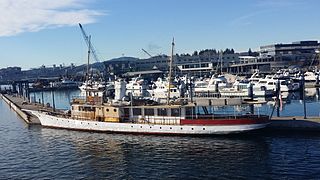
El Primero is a steam yacht that was built in 1893. This vessel was once considered one of the most luxurious yachts on the West Coast of the United States, and was one of the few steam yachts to be operated on Puget Sound. The yacht has since been converted to diesel, but it remained operational as of 2010.

The Nottingham Industrial Museum is a volunteer-run museum situated in part of the 17th-century stables block of Wollaton Hall, located in a suburb of the city of Nottingham. The museum won the Nottinghamshire Heritage Site of the Year Award 2012, a local accolade issued by Experience Nottinghamshire. The Museum collection closed in 2009 after Nottingham City Council withdrew funding, but has since reopened at weekends and bank holidays, helped by a £91,000 government grant, and run by volunteers. The museum contains a display of local textiles machinery, transport, telecommunications, mining and engineering technology. There is a display of cycles, motorcycles, and motor cars. There are examples of significant lace-making machinery. It also houses an operational beam engine, from the Basford, Nottingham pumping station.

SS (RMS) Mona's Isle (III), No. 76304, the third ship in the company's history to be so named, was a paddle steamer which served with the Isle of Man Steam Packet Company until she was purchased by The Admiralty in 1915.

William Roberts and Company of Phoenix Foundry in Nelson, Lancashire, England, produced many of the steam engines that powered cotton weaving and spinning mills of Pendle and neighbouring districts. Industrial historian Mike Rothwell has called Phoenix foundry “Nelson’s most significant engineering site”.
Willans & Robinson Limited manufacturing engineers of Thames Ditton, Surrey. Later, from 1896, at Victoria Works, Rugby, Warwickshire, England. They were manufacturers of stationary reciprocating steam engines then steam turbines, diesel motors and generators. They also ran their own foundry.

Joseph William Sutton, identified in the print media as J. W. Sutton, was an Australian engineer, shipbuilder, inventor, pioneer in electric lighting and x-ray pioneer in Queensland.
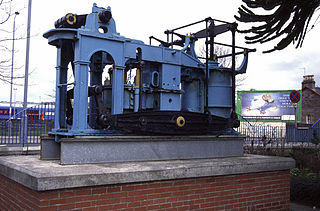
Messrs Robert Napier and Sons was a famous firm of Clyde shipbuilders and marine engineers at Govan, Glasgow founded by Robert Napier in 1826. It was moved to Govan for more space in 1841. His sons James and John were taken into partnership in 1853.
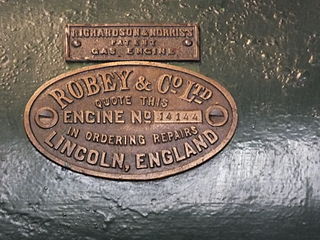
Robey and Co. was an engineering company based in Lincoln, Lincolnshire, England which can be traced back to around 1849.

The PV Pyap is a tourist paddle vessel operating within Swan Hill's Pioneer Settlement. Originally launched as a barge in July 1896 at Mannum, the Pyap was completed as a paddle steamer in late 1897 and operated on the Murray River. In 1970, the Pyap was purchased by Toby Henson and refitted with a diesel enginge, with the intention of relocation to the Pioneer Settlement.

The West Street Foundry was an American steam engineering works notable for producing marine steam engines in the mid-19th century. Based in Brooklyn, New York, the company built at least 27 marine engines between 1845 and 1855, including engines for some of the fastest and finest steamboats of the era. The company also built and repaired steam engines and boilers of all types, as well as doing other metalwork. The company failed and was liquidated in 1855.



















